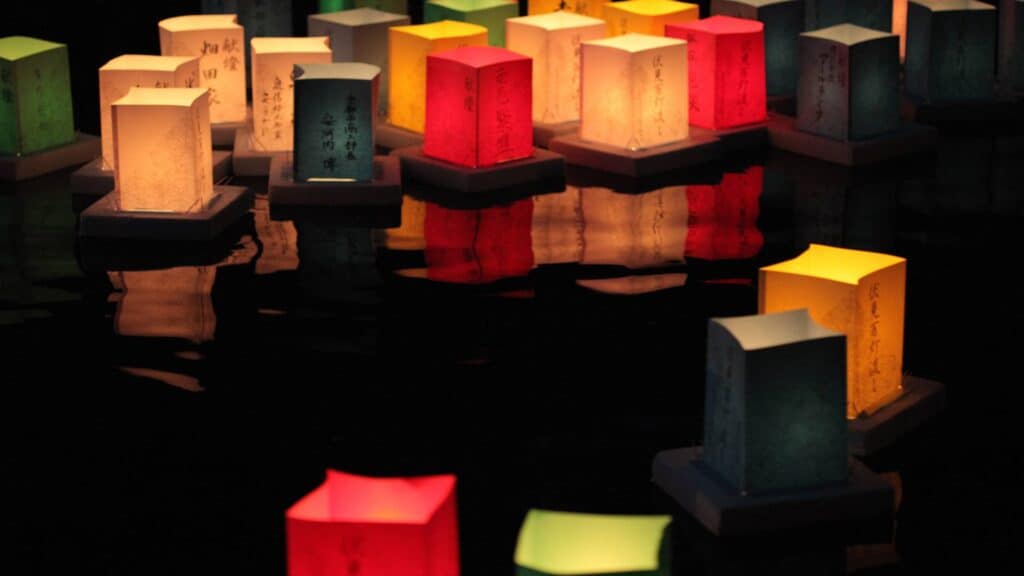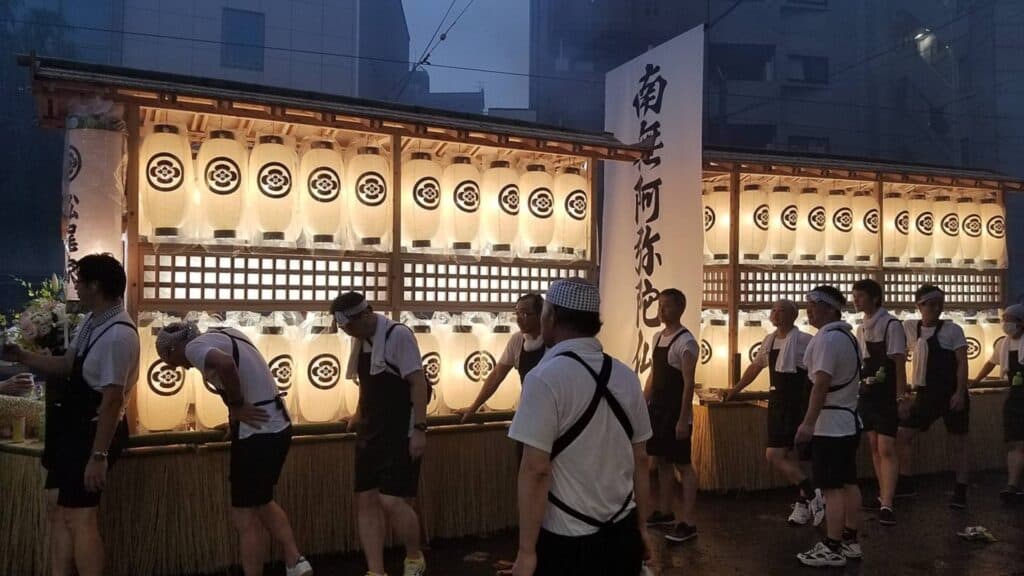In Japan, there are many holidays and celebrations to enjoy. Some last just a day, while others go on for weeks. If you’re curious about Obon and how to celebrate it in Japan, you’re in the right place. Let’s explore what this Japanese event is all about!
Insight 1: What is Obon?

Obon is a Buddhist ceremony where ancestors are believed to return to this world to visit relatives. The date varies across Japan, with three separate Obon celebrations happening in diverse prefectures. In 1873, Japan adopted the Gregorian Calendar, leading to the holiday being shifted by precisely one month to around 15th August in many areas.

The origins of Obon aren’t well documented, but Japan has had a longstanding tradition of making offerings to ancestors in midsummer. It’s believed that the Buddhist event known as Urabon-e, held on 13-16 July of the lunar calendar, influenced Obon’s evolution into the unique celebration it is today.
Insight 2: When does Obon start and end?

The first bon celebrated is Shichigatsu Bon (July Bon), which occurs around 15th July in Japan’s eastern Kanto region (Tokyo, Yokohama, and Tohoku region). In these areas, the date was adjusted to 15th July with the adoption of the new calendar. This Bon is sometimes called the ‘New Obon’ or ‘Tokyo Bon.’
Next is Hachigatsu Bon (August Bon), observed on 15th August and the most widely commemorated bon.

Lastly, we have Kyu Bon (Old Bon), celebrated on the 15th day of the ninth month on the lunar calendar. This means the date changes yearly but falls between 8th August and 7th September. Kyu Bon is observed in Japan’s northern Kanto region, Chugoku Region, Shikoku, and Okinawa Prefecture. Various theories exist as to why many regions chose this ‘old Obon’ period, including the transition to the new calendar coinciding with the busy farming season and the rainy season not yet ending.
Insight 3: What do people do during Obon?

Though Obon falls in the middle of the months dedicated to various religions, preparations kick off well beforehand.
Here’s a breakdown of the days and events during the celebrations:
12th Day

First up is ‘Tanabata’, the day to set up a ‘Shoryodana’, a shelf adorned with ancestral tablets and altarage used during Obon, to welcome the ancestors. A rug is placed on a stand, and spectral horses made from aubergines and cucumbers are crafted, with toothpicks inserted to represent legs. These horses are believed to be used by the ancestors for travel between worlds. The cucumber symbolizes a horse, while the aubergine represents a cow, expressing the wish for swift arrival and unhurried departure.
13th Day

In the evening, the ancestors are welcomed with a small fire burning outside, intended to guide the horses, ridden by the ancestors, on their journey to our world.
14th and 15th Days

Throughout the Obon period, ancestors are thought to reside at the spirit trellis. Offerings of fruits, sweetmeats, and food are made. Families visit their ancestors’ graves, tidying and repairing them. In some instances, flowers and a bowl of water are also offered. Afterwards, families often share a meal together while reminiscing about lost loved ones.
16th Day

Ancestors are believed to remain at home until morning; in the evening, hemp seed reeds are burnt in hopes that the smoke will guide them back. Bonfires are a part of the celebrations, with an interesting tidbit: in Kyoto, bonfires in the shape of various kanji characters are ignited. Additionally, it’s customary to float small paper lanterns down a river in a tradition known as toro nagashi.
Insight 4: What are some of the Obon events?
Obon events and customs vary from region to region, with each area nurturing ancient and unique traditions that still thrive today as local customs. Here are some examples.
Bon Odori

The most popular Obon event is the Bon dance (Bon Odori). It is said to have originated from the Nenbutsu dance, performed to soothe the spirits of ancestors, with the additional purpose of praying for a good harvest and providing entertainment for festival-goers. Nowadays, the religious significance of the dance has faded, and it primarily serves as a form of entertainment.
Gozan Okuribi (Gozan Bonfire)

On 16th August, bonfires shaped as Kanji characters come to life on five mountains surrounding Kyoto: Higashiyama Nyoigatake, Matsugasaki Nishiyama and Higashiyama, Nishigamo Funayama, and Ohokuyama.
Shoronagashi (Floating Spirits)

In Nagasaki Prefecture, this traditional event is held every year on the 15th of August to guide the spirits of the deceased to paradise. Instead of floating it down a river, family members of the deceased pull a large spirit boat (with wheels) resembling an omikoshi (portable shrine) through the streets during the first Obon (new Obon) occasion. The event is lively, with the ringing of bells, chanting, and the sound of numerous large firecrackers being set off, accompanied by shouts of “doi doi.”
Embrace the Spirit of Obon and Join the Festivities!

Obon is a day when many people fondly recall their hometowns, their souls brimming with nostalgia and memories of their ancestors—reflecting on cherished events within the community and each family. It stands as one of Japan’s most unique celebrations, an experience truly special to being here. If you’re keen to join in these festivities, be sure to secure your tickets before the celebrations kick off! ✈️ 🥳








